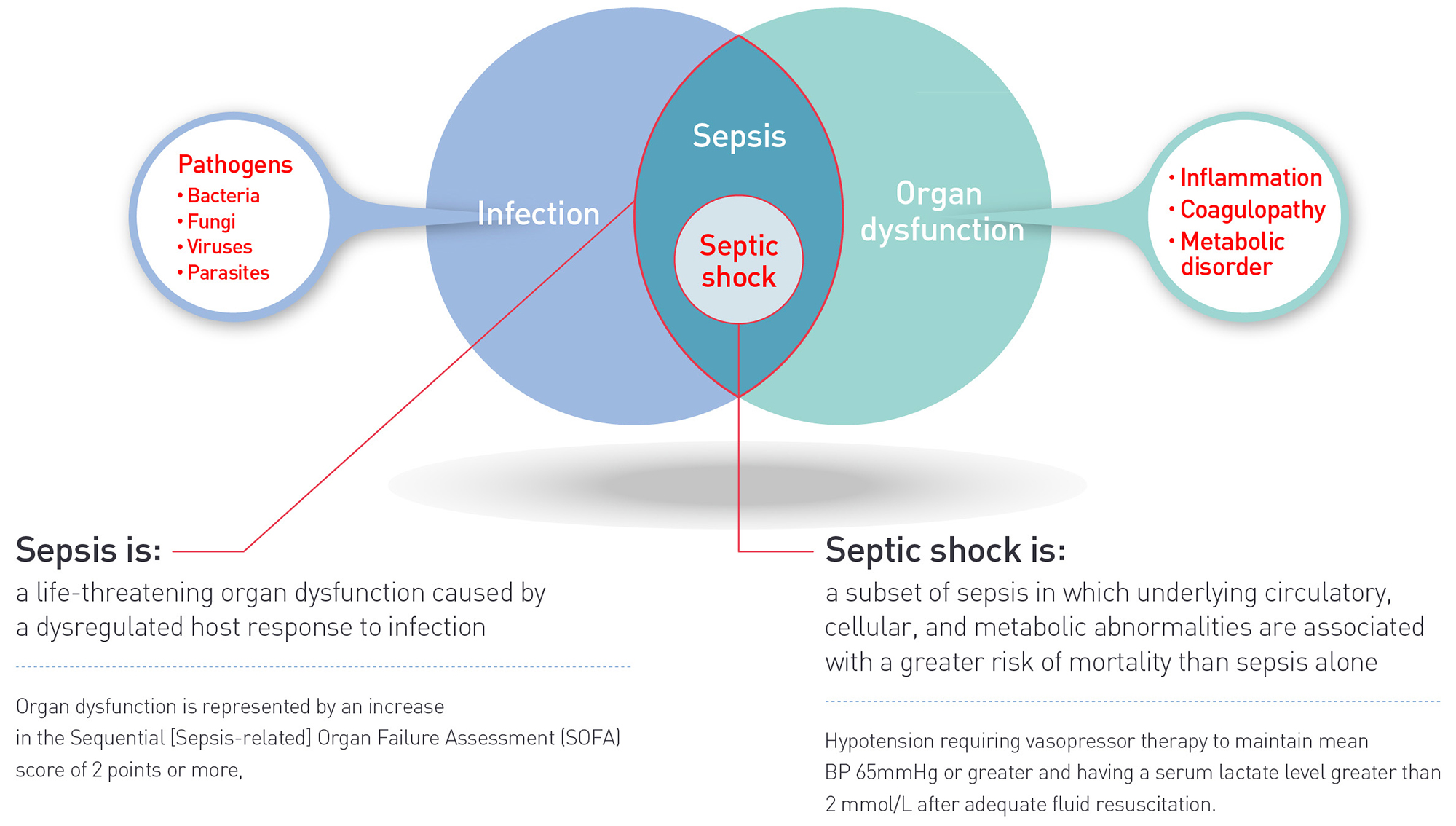Sepsis is a life-threatening complication with a high mortality
Sepsis is a life-threatening complication. It causes a major clinical problem in the management of patients in the intensive care unit (ICU).
Sepsis can be triggered by an infection in any part of the body. The most common sites of infection leading to sepsis are the lungs, urinary tract, abdomen and pelvis. Uncontrolled inflammatory responses to bacterial infection result in the collapse of the cardiovascular function, leading to multiple organ dysfunction syndrome (MODS) and death.
Without timely treatment, sepsis can rapidly lead to tissue damage, organ failure, and death. Major efforts have been made for decades to improve patient outcome. However, sepsis still carries a mortality rate of ranging from 30 to 70%.
The annual incidence of sepsis worldwide is estimated to be around 27 million cases and approximately 8 million people around the world die due to sepsis every year.
Definitions of sepsis and septic shock1) 2)

What is Endotoxin? - Endotoxin is a major pathogenic trigger of sepsis -
Endotoxin, also known as Lipopolysaccharide (LPS) is one of the principal components of the outer membrane of Gram-negative bacteria. It induces systemic inflammatory responses characterized by induction of pro-inflammatory cytokines, fever, hypotension, intravascular coagulation and nitric oxide that lead to “endotoxin shock”. Higher level of endotoxin is associated with worse clinical outcomes3).
Endotoxin invades into the blood stream from the infectious focus or by the bacterial or endotoxin translocation from the gut.
What is endotoxin

References
- “The Third International Consensus Definitions for Sepsis and Septic Shock (Sepsis-3)” Singer M et al. JAMA (2016) 315:801-10
- “Developing a NewDefinition and Assessing New Clinical Criteria for Septic Shock For the Third International Consensus Definitions for Sepsis and Septic Shock (Sepsis-3) “ Shankar-Hari M et al. JAMA (2016) 315:775-87
- “Relationship between Plasma Levels of Lipopolysaccharide (LPS) and LPS-Binding Protein in Patients with Severe Sepsis and Sep tic Shock” Opal SM et al. J Infect Dis (1999) 180:1584-9

